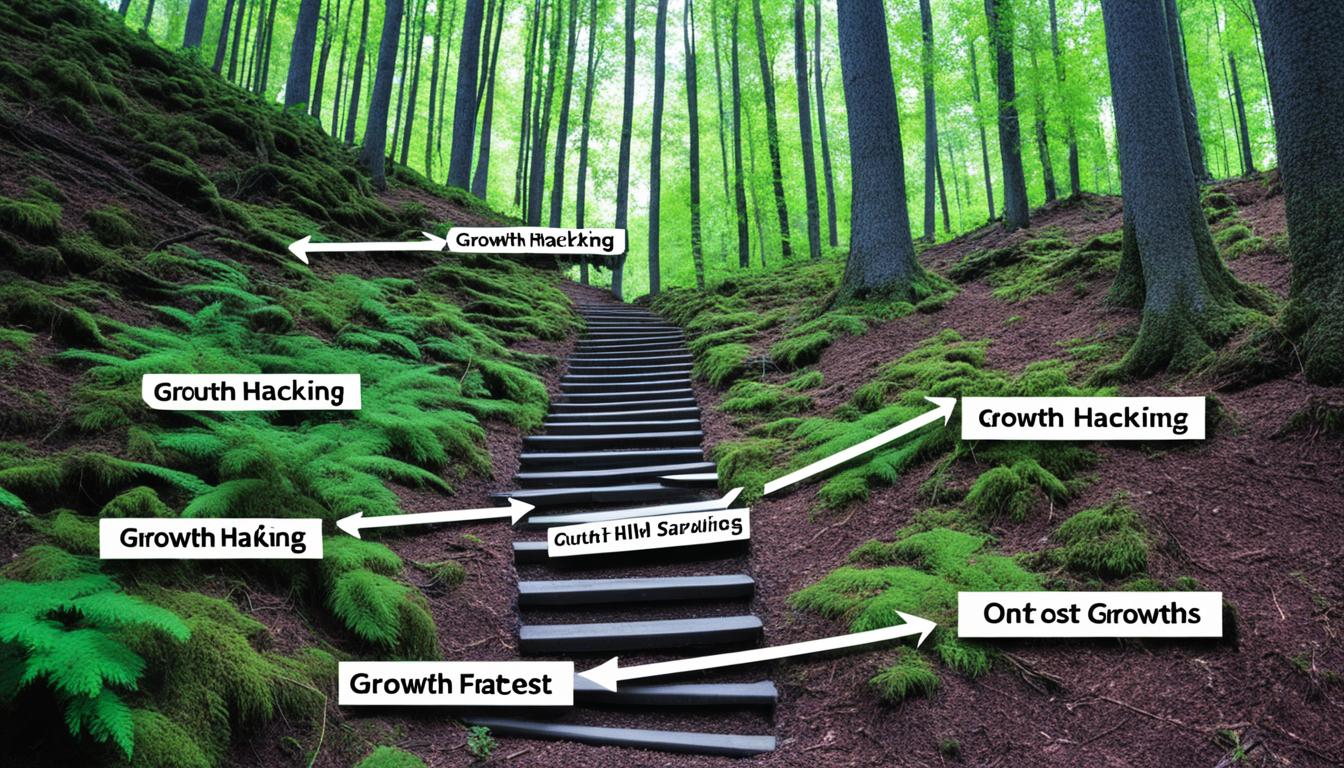In this case study, we will explore Stanley Black & Decker’s marketing strategy for 2024 and how they have successfully transformed their approach from a traditional B2B model to a B2B2C model. We will delve into their use of customer data platforms (CDPs), collaboration between teams, and the impact on customer engagement and satisfaction.
Stanley Black & Decker, a renowned global provider of tools, security solutions, and industrial products, recognized the need to adapt to changing market dynamics and evolve their marketing strategy. By transitioning from a traditional B2B model to a B2B2C model, they aimed to better cater to consumer preferences and needs while supporting their B2B partners.
Key Takeaways:
- Stanley Black & Decker successfully transformed their marketing strategy from a traditional B2B model to a B2B2C model.
- Their focus on customer data platforms (CDPs) and collaboration between teams contributed to enhanced customer engagement and satisfaction.
- Transitioning to a B2B2C model allowed them to gain end-user visibility and better understand consumer preferences.
- The collaboration between the customer journey team and the data operations team was instrumental in achieving marketing goals.
- By leveraging clean data and implementing personalized marketing initiatives, Stanley Black & Decker achieved significant growth in active/engaged end-users.
Transitioning to a B2B2C Model
Stanley Black & Decker understood the significance of end-user visibility and recognized the need to engage directly with consumers while supporting their B2B partners. Previously, their decentralized data management system resulted in limited visibility into the end user. To address this challenge, Stanley Black & Decker made a strategic shift towards a B2B2C model to better understand and cater to consumer preferences and needs.
This transition allowed Stanley Black & Decker to gain valuable insights into the end user, enabling them to develop more targeted marketing strategies. By embracing a B2B2C approach, they positioned themselves as a customer-centric brand, improving their ability to connect with consumers on a deeper level.
A central aspect of this transformation was the adoption of a decentralized data management system. By consolidating and centralizing their data, Stanley Black & Decker enhanced their ability to analyze and understand end-user behaviors, preferences, and purchase patterns. This centralized approach empowered the marketing team to create personalized and tailored experiences that resonate with their target audience.
Moreover, the transition to a B2B2C model allowed Stanley Black & Decker to establish stronger relationships with their B2B partners. By collaborating closely with their partners and sharing insights gained from end-user visibility, they were able to align their marketing efforts to drive mutual success and deliver value to all stakeholders.
Overall, the shift to a B2B2C model has enabled Stanley Black & Decker to unlock new opportunities for growth, strengthen customer relationships, and drive innovation. Through enhanced end-user visibility and decentralized data management, they have positioned themselves at the forefront of the industry, paving the way for continued success in an evolving marketplace.
Key Benefits of Transitioning to a B2B2C Model
| Improved End-User Visibility | Enhanced Personalization | Stronger B2B Partnerships |
|---|---|---|
| Direct insights into consumer behavior and preferences | Ability to create tailored marketing campaigns | Collaboration with partners to drive mutual success |
| Deeper understanding of end-user purchase patterns | More targeted messaging and offers | Sharing of insights to align marketing efforts |
| Opportunity to develop customer-centric strategies | Improved customer engagement and satisfaction | Delivering value to all stakeholders |
Collaboration for Effective Data Management
The collaboration between the customer journey team and the data operations team was a vital component of Stanley Black & Decker’s marketing strategy. Together, they worked towards compiling an extensive end-user database and implementing a customer data platform (CDP) to ensure streamlined data collection, analysis, and activation.
The customer journey team, consisting of dedicated professionals with a deep understanding of customer behavior, worked closely with the data operations team, which specialized in data management and operations. This collaboration allowed for the seamless integration of customer data into the CDP, enabling accurate and comprehensive insights into customer interactions and preferences.
The role of the customer journey team was to analyze customer touchpoints and map out the various stages of the customer journey. By understanding and documenting the customer’s interactions with the brand, they could identify key opportunities for improved engagement and personalization.
The data operations team, on the other hand, was responsible for developing and maintaining the CDP infrastructure. They ensured that the platform was capable of capturing, storing, and organizing customer data from different sources and touchpoints. This unified data repository became a valuable asset for the marketing team, providing a holistic view of customer behavior and enabling data-driven decision making.
The customer data platform (CDP) played a pivotal role in facilitating effective data management. It acted as a centralized hub that allowed the customer journey team and the data operations team to access and leverage customer data in real-time. With the CDP, they could segment customers based on their preferences, demographics, and behaviors, enabling targeted marketing campaigns and personalized experiences.
The collaboration between the customer journey team and the data operations team, empowered by the customer data platform (CDP), proved to be instrumental in achieving Stanley Black & Decker’s marketing goals. It allowed them to gain a deeper understanding of their customers, improve decision-making, and enhance overall marketing performance.
| Benefits of Collaboration for Effective Data Management |
|---|
| 1. Comprehensive and accurate customer data |
| 2. Targeted marketing campaigns and personalized experiences |
| 3. Improved decision-making based on real-time customer insights |
| 4. Enhanced marketing performance and customer satisfaction |
Educating Marketers and Data Governance
Stanley Black & Decker understands the criticality of educated marketers and diligent data governance to drive successful marketing initiatives. They have implemented comprehensive data governance processes that prioritize data cleanliness and accuracy, ensuring the availability of high-quality data for decision-making purposes. Moreover, the company places great emphasis on aligning with privacy policies to protect customer information and maintain compliance.
Building a Culture of Data Excellence
Stanley Black & Decker recognizes that educating the marketing team on data operations is paramount to achieving data-driven marketing success. By fostering a data-centric culture within the organization and providing regular training sessions on data best practices, the company equips its marketers with the knowledge and skills necessary to leverage data effectively.
Furthermore, the marketing team collaborates closely with the customer success team to cultivate a sense of shared responsibility for enhancing the overall customer experience. This partnership exemplifies Stanley Black & Decker’s commitment to customer-centricity and emphasizes the value of accurate and reliable data in driving marketing strategies.
Implementing Robust Data Governance Processes
Stanley Black & Decker has implemented robust data governance processes to maintain the cleanliness and accuracy of their data. These processes encompass data collection, storage, and management to ensure data integrity throughout the organization.
By implementing data governance frameworks and mechanisms, the company establishes clear guidelines and standard operating procedures for data management. This not only ensures compliance with privacy policies and data regulations but also guarantees the availability of reliable data for marketing decision-making processes.
Data Governance Best Practices
| Best Practice | Description |
|---|---|
| Data Classification | Applying labels to data sets based on sensitivity to facilitate proper handling and access control. |
| Data Quality Assessment | Regularly evaluating data quality to identify and rectify issues, ensuring data accuracy and consistency. |
| Data Retention Policies | Establishing guidelines on how long data should be retained and when it should be securely disposed of. |
| Data Access Controls | Implementing role-based access controls to ensure that data is only accessible to authorized individuals. |
| Data Privacy Compliance | Adhering to applicable data privacy laws and regulations, such as GDPR and CCPA, to protect customer data. |
Table: Data governance best practices implemented by Stanley Black & Decker to ensure data cleanliness and adherence to privacy policies.
Enhanced Customer Engagement and Insights
Through their collaboration with the data operations team, Stanley Black & Decker’s marketing team witnessed remarkable results. They achieved an average growth of 20% in the number of active/engaged end-users and a 50% growth in the number of end-users with enriched data. By leveraging clean data, they were able to personalize marketing initiatives and improve customer engagement and satisfaction.
Data Enrichment and Personalized Marketing
One of the key strategies implemented by Stanley Black & Decker was data enrichment. By collecting and analyzing relevant customer data, they were able to gain valuable insights into their active and engaged end-users. This data enrichment process allowed them to better understand customer preferences, behavior patterns, and purchasing habits.
With these insights, Stanley Black & Decker’s marketing team was able to deliver personalized marketing campaigns that resonated with their target audience. From tailored product recommendations to customized promotions, they were able to create meaningful and relevant experiences for their customers.
Personalization not only improved customer engagement but also played a significant role in driving customer satisfaction. By delivering messages that addressed specific needs and interests, Stanley Black & Decker was able to foster stronger connections with their customers, ultimately leading to increased loyalty and brand advocacy.
Active/Engaged End-Users: A Key Metric
Stanley Black & Decker’s focus on active/engaged end-users was a key driver of their marketing success. By continuously monitoring and tracking the number of active users, they were able to gauge the effectiveness of their marketing efforts and campaign performance.
The growth rate of active/engaged end-users is a clear indication of the effectiveness of personalized marketing initiatives. It signifies that customers are actively interacting with the brand, showing genuine interest, and are more likely to convert and make repeat purchases.
Gaining Actionable Insights
By leveraging clean and enriched data, Stanley Black & Decker’s marketing team gained actionable insights that fueled data-driven decision-making. These insights enabled them to refine their marketing strategies, optimize campaign targeting, and allocate resources more effectively.
Through data analysis, they were able to identify trends, preferences, and patterns that guided their marketing efforts. This data-driven approach allowed them to make informed decisions based on real-time data, ensuring that their marketing initiatives were always relevant and timely.
Furthermore, by continuously analyzing customer data, Stanley Black & Decker was able to identify opportunities for cross-selling, upselling, and personalized product recommendations. These insights helped them build long-term customer relationships and maximize customer lifetime value.
Dynamic Customization of Email Content
Stanley Black & Decker’s marketing team utilized the integration of the customer data platform (CDP) to achieve dynamic customization of email content. By harnessing the power of data from the end-user database and combining it with SKU data, they created personalized email templates tailored to each user’s occupation and hobbies, showcasing relevant products and offerings.
This level of customization allowed Stanley Black & Decker to deliver targeted and engaging email campaigns, resulting in higher click-through rates and improved conversion rates. The personalized templates resonated with recipients, leading to increased customer engagement and satisfaction.
To streamline the process and eliminate manual efforts, the marketing team leveraged API integration. This integration enabled seamless data transfer between systems, ensuring that the personalized email templates were consistently up to date and reflective of the user’s preferences and behavior.
Implementing email customization, personalized templates, and API integration brought significant benefits to Stanley Black & Decker’s marketing strategy. By tailoring their email content to the specific needs and interests of their audience, they were able to enhance customer engagement, improve brand loyalty, and drive conversions.
Next, we will explore how Stanley Black & Decker prioritized the end user in their customer journeys and the impact it had on their overall marketing strategy.
Putting the End User First
Stanley Black & Decker understands the importance of prioritizing the end user and delivering personalized customer journeys. By tailoring their marketing efforts to individual preferences and needs, they aim to create meaningful connections and foster customer loyalty.
To measure the success of their campaigns, Stanley Black & Decker tracks the growth of their end-user database and monitors the percentage of active users. This data-driven approach allows them to continuously optimize their strategies and stay aligned with their customers’ evolving expectations.
By analyzing engagement metrics, such as click-through rates and conversion rates, Stanley Black & Decker gains valuable insights into user behavior. This enables them to automate customer journeys based on specific actions, ensuring that each user receives a tailored experience.
Automating Personalization with Customer Journeys
Stanley Black & Decker leverages their end-user database and customer data platform (CDP) to create dynamic customer journeys. By mapping out the different touchpoints and interactions throughout the customer lifecycle, they are able to deliver personalized content at each stage.
Through data segmentation and behavioral targeting, Stanley Black & Decker ensures that their customers receive relevant messages and offers. This level of customization helps to build stronger relationships and increases the likelihood of conversion and repeat business.
For example, if a customer expresses interest in a particular product category, they will be automatically enrolled in a customer journey that showcases related products, offers, and educational resources. This proactive approach enables Stanley Black & Decker to anticipate customer needs and deliver relevant content in real-time.
Enhancing the Customer Experience
Stanley Black & Decker’s focus on personalized customer journeys is centered around enhancing the overall customer experience. By aligning their marketing efforts with individual preferences and needs, they aim to create a seamless and engaging journey for each customer.
Through the use of data enrichment techniques, Stanley Black & Decker ensures that their end-user database is continuously updated with accurate and relevant information. This enables them to deliver personalized messaging and experiences that resonate with their customers.
By prioritizing the end user and focusing on personalized customer journeys, Stanley Black & Decker has established themselves as a leader in customer-centric marketing. Their data-driven approach, combined with automation and dynamic content, enables them to stay relevant and deliver exceptional experiences to their customers.
Overcoming Limitations and Prioritizing Excellence
To achieve digital transformation and support their growth initiatives, Stanley Black & Decker collaborated with Accenture to create an agile and resilient finance operating model. Through their partnership, they successfully consolidated and standardized various processes, implemented a new data strategy, and established governance rules for enhanced efficiency and accuracy. To streamline and accelerate tasks, they also harnessed the power of AI-powered automation.
By transforming their finance operating model, Stanley Black & Decker was able to overcome limitations that hindered their digital transformation efforts. The new model provided them with a solid foundation to drive agility across their finance function and support their strategic goals.
This transformation empowered their finance team to adapt quickly to changing market dynamics, respond to evolving customer demands, and seize growth opportunities. The agile finance operating model allowed them to optimize processes, improve decision-making, and enhance overall operational efficiency.
The Benefits of the Finance Operating Model Transformation
The implementation of an agile and resilient finance operating model enabled Stanley Black & Decker to realize several key benefits:
- Improved decision-making through real-time access to accurate financial data and insights
- Enhanced collaboration and cross-functional alignment
- Increased transparency and visibility into financial performance
- Streamlined and accelerated financial processes
This image illustrates the importance of a robust finance operating model in driving digital transformation and agility.
By prioritizing excellence and embracing a modern finance operating model, Stanley Black & Decker has positioned itself as a leader in their industry. Their commitment to continuous improvement and innovation has allowed them to navigate challenges, seize opportunities, and deliver exceptional financial performance.
Achieving a Strong Digital Core
Through their collaboration with Accenture, Stanley Black & Decker established a strong digital core and a finance operating model that centralized accounting processes. This transformation marked a significant milestone in the company’s journey towards streamlining operations and driving efficiency.
Centralized accounting processes played a pivotal role in simplifying financial workflows and reducing complexities in managing financial transactions. By consolidating and standardizing accounting practices, Stanley Black & Decker achieved improved visibility and control over their financial operations.
One key aspect of this centralized approach was the implementation of touchless transactional processes. Leveraging advanced technologies, such as robotic process automation (RPA) and artificial intelligence (AI), the company automated routine financial tasks, eliminating human errors and freeing up valuable time for finance professionals.
With touchless transactional processes in place, Stanley Black & Decker experienced streamlined procurement, payment, and reporting procedures. The manual effort required for processing invoices, reconciling accounts, and generating financial reports significantly decreased, leading to increased productivity and cost savings.
Benefits of Centralized Accounting Processes and Touchless Transactional Processes
1. Enhanced Efficiency: Centralizing accounting processes and implementing touchless transactional processes eliminated redundancies and improved operational efficiency. By automating tasks, finance professionals could focus on higher-value activities, such as financial analysis and strategic decision-making.
2. Accuracy and Compliance: With a centralized system in place, financial data integrity improved, reducing the risk of errors and ensuring compliance with accounting standards and regulations.
3. Cost Savings: Streamlining and automating financial processes led to cost savings in terms of reduced manual effort, improved resource allocation, and optimized cash flow management.
4. Real-time Insights: Centralized accounting processes enabled finance professionals to access real-time financial data and generate timely reports, empowering them to make informed business decisions.
Overall, Stanley Black & Decker’s adoption of centralized accounting processes and touchless transactional processes enabled them to achieve a strong digital core. This digital transformation revolutionized their finance operating model, driving efficiency, accuracy, and agility in their financial operations.
Future Plans and Continuous Improvement
Looking ahead to 2023, Stanley Black & Decker’s marketing team has exciting plans to further enrich end-user data and enhance their marketing strategies. One key focus area is enriching end-user data by gathering additional insights and preferences to improve customer targeting and personalization efforts.
In line with their commitment to deliver timely and relevant content, they aim to implement real-time activation techniques. By leveraging real-time data and insights, they can engage with customers at the right moment, increasing the chances of conversion and customer satisfaction.
A vital tool in their marketing arsenal will be their CDP-driven lookalike audiences. By utilizing customer data platforms (CDPs), they can identify and target audiences that share similar characteristics and behaviors with their existing customer base. This targeted approach allows them to reach new potential customers with a higher likelihood of conversion and engagement.
To summarize, Stanley Black & Decker’s future plans involve enriching end-user data, implementing real-time activation techniques, and utilizing CDP-driven lookalike audiences. By continuously improving their marketing strategies and leveraging cutting-edge technology, they are poised to drive even greater success in the coming year.
Case Study Conclusion
Stanley Black & Decker’s marketing strategy has successfully transformed their approach from a traditional B2B model to a B2B2C model. By collaborating, leveraging data operations, and implementing a customer data platform (CDP), they have achieved enhanced customer engagement, personalized experiences, and improved overall satisfaction.
Throughout this case study, we have seen how Stanley Black & Decker’s data-driven marketing approach has set them up for continued success in a rapidly evolving landscape. By prioritizing clean and accurate data, they have been able to cater to consumer preferences and needs, resulting in increased end-user visibility and satisfaction.
The implementation of a customer data platform has allowed Stanley Black & Decker to compile an end-user database and gain valuable insights into customer preferences. This data has enabled personalized marketing initiatives, dynamic customization of email content, and the automation of customer journeys based on specific actions.
Furthermore, Stanley Black & Decker’s commitment to collaboration and education has been instrumental in achieving their marketing goals. Their focus on data governance and privacy policies has ensured data cleanliness and accuracy, fostered a sense of shared responsibility among teams, and enhanced the customer experience.
In conclusion, Stanley Black & Decker’s successful transformation to a B2B2C marketing strategy, driven by collaboration, data operations, and the implementation of a customer data platform, has resulted in enhanced customer engagement, personalized experiences, and improved overall satisfaction. Their continuous focus on data-driven marketing and leveraging clean data has set them up for continued success in a rapidly evolving landscape.
| Benefits | Results |
|---|---|
| Enhanced customer engagement | Increase in active/engaged end-users by 20% |
| Personalized experiences | 50% growth in end-users with enriched data |
| Improved overall satisfaction | Higher customer satisfaction scores |
Conclusion
Stanley Black & Decker’s marketing strategy for 2024 exemplifies the power of data-driven marketing in today’s landscape. By embracing collaboration, implementing a customer data platform, and educating their marketing team, they have achieved impressive results in terms of customer engagement and personalization. This approach has enabled them to deliver exceptional experiences to their target audience while driving business growth.
Through their commitment to continuous improvement, Stanley Black & Decker is poised to further enhance their marketing efforts. Their emphasis on enriching end-user data, real-time activation, and utilizing customer data platform-driven lookalike audiences will ensure they stay at the forefront of industry trends and maintain a competitive edge.
By leveraging clean and accurate data, Stanley Black & Decker has successfully transformed their marketing strategy, enabling them to understand and engage with their customers on a deeper level. Their dedication to data-driven decision-making has resulted in personalized experiences that resonate with their audience, leading to increased customer satisfaction and loyalty.
In today’s fast-paced marketing landscape, Stanley Black & Decker’s approach serves as a blueprint for success. By harnessing the power of data, prioritizing customer engagement, and continuously striving for excellence, they have positioned themselves as a leader in their industry. As companies navigate the ever-evolving digital landscape, Stanley Black & Decker’s marketing strategy stands as a testament to the transformative power of data-driven marketing.








